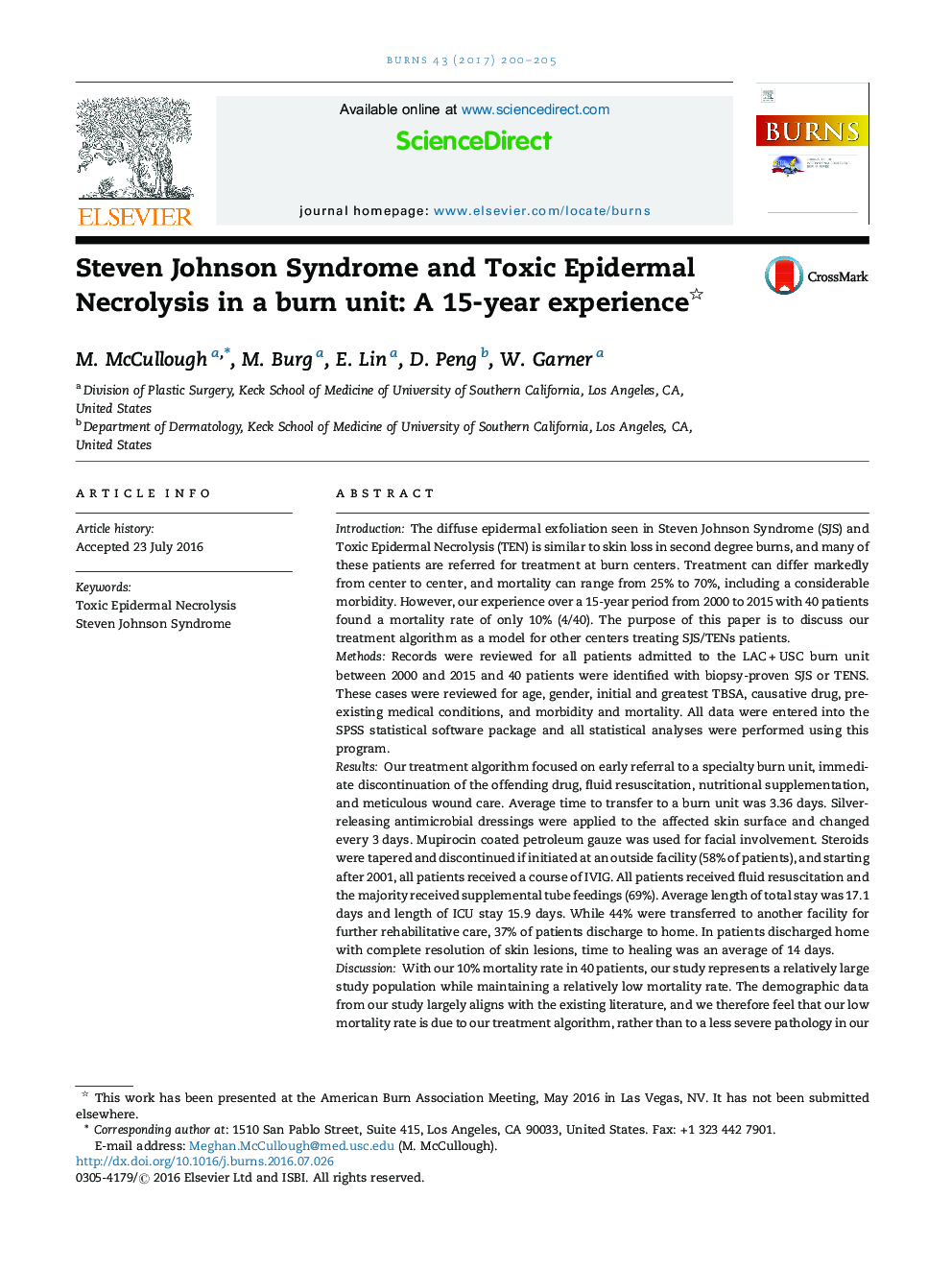| کد مقاله | کد نشریه | سال انتشار | مقاله انگلیسی | نسخه تمام متن |
|---|---|---|---|---|
| 5636129 | 1406662 | 2017 | 6 صفحه PDF | دانلود رایگان |
- Our 10% mortality rate suggests Steven Johnson Syndrome is a highly survivable disease.
- An explicit treatment algorithm is proposed.
- Mortality ratio proves significant improvement from algorithm for disease severity.
IntroductionThe diffuse epidermal exfoliation seen in Steven Johnson Syndrome (SJS) and Toxic Epidermal Necrolysis (TEN) is similar to skin loss in second degree burns, and many of these patients are referred for treatment at burn centers. Treatment can differ markedly from center to center, and mortality can range from 25% to 70%, including a considerable morbidity. However, our experience over a 15-year period from 2000 to 2015 with 40 patients found a mortality rate of only 10% (4/40). The purpose of this paper is to discuss our treatment algorithm as a model for other centers treating SJS/TENs patients.MethodsRecords were reviewed for all patients admitted to the LACÂ +Â USC burn unit between 2000 and 2015 and 40 patients were identified with biopsy-proven SJS or TENS. These cases were reviewed for age, gender, initial and greatest TBSA, causative drug, pre-existing medical conditions, and morbidity and mortality. All data were entered into the SPSS statistical software package and all statistical analyses were performed using this program.ResultsOur treatment algorithm focused on early referral to a specialty burn unit, immediate discontinuation of the offending drug, fluid resuscitation, nutritional supplementation, and meticulous wound care. Average time to transfer to a burn unit was 3.36 days. Silver-releasing antimicrobial dressings were applied to the affected skin surface and changed every 3 days. Mupirocin coated petroleum gauze was used for facial involvement. Steroids were tapered and discontinued if initiated at an outside facility (58% of patients), and starting after 2001, all patients received a course of IVIG. All patients received fluid resuscitation and the majority received supplemental tube feedings (69%). Average length of total stay was 17.1 days and length of ICU stay 15.9 days. While 44% were transferred to another facility for further rehabilitative care, 37% of patients discharge to home. In patients discharged home with complete resolution of skin lesions, time to healing was an average of 14 days.DiscussionWith our 10% mortality rate in 40 patients, our study represents a relatively large study population while maintaining a relatively low mortality rate. The demographic data from our study largely aligns with the existing literature, and we therefore feel that our low mortality rate is due to our treatment algorithm, rather than to a less severe pathology in our patient population. This claim is supported by a standard mortality ratio of 1.68. This ratio proves a significantly improved mortality than would be expected based on disease severity on admission.
Journal: Burns - Volume 43, Issue 1, February 2017, Pages 200-205
